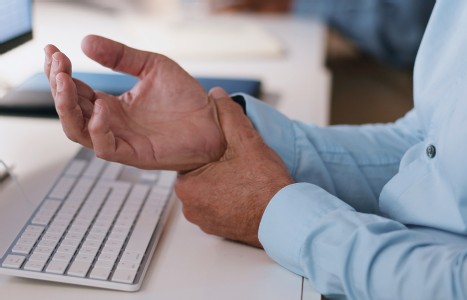It is estimated that 61% of patients with CTS avoid taking surgical options due to postoperative complications and costly surgical procedures. Chiropractic care offers a comprehensive and effective treatment for carpal tunnel syndrome, addressing the condition from multiple angles. Recent studies also have unveiled a game-changing adjunct to chiropractic treatments for CTS: nerve flossing.
Where to Adjust: Best / Worst Tests
Wondering which methods are best (and worst) suited for determining the appropriate manipulation site? While doctors of chiropractic utilize numerous diagnostic techniques and tests to do so, a recent literature review by Triano, et al., was "designed to evaluate the literature on the validity and reliability of the more common methods used by doctors of chiropractic to inform the choice of the site at which to apply spinal manipulation." The review, published in Chiropractic & Manual Therapies and available online free of charge, concludes the following after a structured search that yielded 201 articles which met the reviewers' inclusion criteria:
"The most convincing favourable evidence was for methods which confirmed or provoked pain at a specific spinal segmental level or region. There was also high quality evidence supporting the use, with limitations, of static and motion palpation, and measures of leg length inequality. Evidence of mixed quality supported the use, with limitations, of postural evaluation. The evidence was unclear on the applicability of measures of stiffness and the use of spinal x-rays. The evidence was of mixed quality, but unfavourable for the use of manual muscle testing, skin conductance, surface electromyography and skin temperature measurement."
Triano and colleagues evaluated the existing literature base by conducting a comprehensive online search of Medline, PubMed, CINAHL and ICL through July 2010. Key terms searched focused on anatomical region and/or treatment type. They also conducted hand searches of publication references and archives. Each article was then evaluated and scored independently by two reviewers, assigned on a rotating basis. The full team eventually met to review scores and summarize the evidence.
In their conclusion, the researchers summarize their findings, providing the following clinical takeaway:
"In general, the stronger and more favourable evidence is for those procedures which take a direct measure of the presumptive site of care – methods involving pain provocation upon palpation or localized tissue examination. Procedures which involve some indirect assessment for identifying the manipulable lesion of the spine – such as skin conductance or thermography – tend not to be supported by the available evidence."
Reference
- Triano JJ, Budgell B, Bagnulo A, et al. Review of methods used by chiropractors to determine the site for applying manipulation. Chiro & Man Ther, 2013;21:36. Full text available free of charge online.


